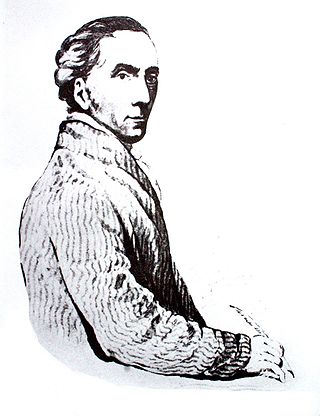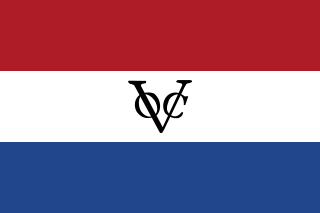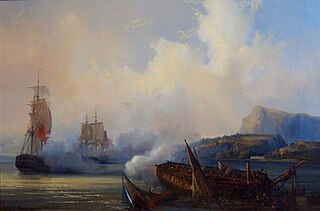Related Research Articles

The Cape Colony,also known as the Cape of Good Hope,was a British colony in present-day South Africa named after the Cape of Good Hope. It existed from 1795 to 1802,and again from 1806 to 1910,when it united with three other colonies to form the Union of South Africa,then became the Cape Province,which existed even after 1961,when South Africa had become a republic,albeit,temporarily outside the Commonwealth of Nations (1961–94).
The written history of the Cape Colony in what is now South Africa began when Portuguese navigator Bartolomeu Dias became the first modern European to round the Cape of Good Hope in 1488. In 1497,Vasco da Gama sailed along the whole coast of South Africa on his way to India,landed at St Helena Bay for 8 days,and made a detailed description of the area. The Portuguese,attracted by the riches of Asia,made no permanent settlement at the Cape Colony. However,the Dutch East India Company (VOC) settled the area as a location where vessels could restock water and provisions.
The following lists events that happened during the 1790s in South Africa.

The area known today as Cape Town has no written history before it was first mentioned by Portuguese explorer Bartholomeu Dias in 1488. The German anthropologist Theophilus Hahn recorded that the original name of the area was '||Hui !Gais' –a toponym in the indigenous Khoi language meaning "where clouds gather."

The Regiment de Meuron was a regiment of infantry originally raised in Switzerland in 1781 for service with the Dutch East India Company (VOC). At the time the French,Spanish,Dutch and other armies employed units of Swiss mercenaries. The regiment was named for its commander,Colonel Charles-Daniel de Meuron,who was born in Neuchâtel in 1738.

JonkheerJan Willem Janssens GCMWO was a Dutch nobleman,soldier and statesman who served both as the governor of the Dutch Cape Colony and governor-general of the Dutch East Indies.

Louis Michel Thibault,was a French-born architect and engineer who designed numerous buildings in the Cape Colony. He was Cape Colony's first trained architect and brought with him a distinctive mannered neo-classicism.

Jacob Abraham Uitenhage de Mist was a Dutch statesman. He was the Head of State of the National Assembly of the Batavian Republic from 17 April 1797 –1 May 1797,and Commissioner-General of the Cape Colony during the Interregnum from 21 February 1803 –25 September 1804,in accordance with the short-lived Treaty of Amiens. The Cape Colony had been under Dutch control from 1652.

The Dutch Cape Colony was a Dutch United East India Company (VOC) colony in Southern Africa,centered on the Cape of Good Hope,from where it derived its name. The original colony and the successive states that the colony was incorporated into occupied much of modern South Africa. Between 1652 and 1691,it was a Commandment,and between 1691 and 1795,a Governorate of the VOC. Jan van Riebeeck established the colony as a re-supply and layover port for vessels of the VOC trading with Asia. The Cape came under VOC rule from 1652 to 1795 and from 1803 to 1806 was ruled by the Batavian Republic. Much to the dismay of the shareholders of the VOC,who focused primarily on making profits from the Asian trade,the colony rapidly expanded into a settler colony in the years after its founding.

Baron Pieter van Reedevan Oudtshoorn was a senior official and Governor designate of the Dutch Cape Colony. He was appointed Governor of the Cape Colony in 1772 to succeed the deceased Governor Ryk Tulbagh but died at sea on his way to the Cape Colony to take up his post. The Western Cape town of Oudtshoorn is named after him. He is the progenitor of the van R(h)eede van Oudtshoorn family in South Africa.

The East Indies theatre of the French Revolutionary Wars was a series of campaigns related to the major European conflict known as the French Revolutionary Wars,fought between 1793 and 1801 between the new French Republic and its allies and a shifting alliance of rival powers. Although the Indian Ocean was separated by vast distance from the principal theatre of the conflict in Western Europe,it played a significant role due to the economic importance of the region to Great Britain,France's most constant opponent,of its colonies in India and the Far Eastern trade.

The capitulation of Saldanha Bay was the surrender to the British of a Batavian expeditionary force sent to recapture the Dutch Cape Colony in 1796. In 1795,early in the War of the First Coalition,French troops overran the Dutch Republic which then became a French client state,the Batavian Republic. Great Britain was concerned by the threat that the Cape Colony posed to its trade routes to British India. It therefore sent an expeditionary force that landed at Simon's Town in June 1795 and forced the surrender of the colony in a short campaign. British Vice-Admiral Sir George Elphinstone,then reinforced the garrison and stationed a naval squadron at the Cape Colony to protect it.

The invasion of the Cape Colony,also known as the Battle of Muizenberg,was a British military expedition launched in 1795 against the Dutch Cape Colony at the Cape of Good Hope. The Dutch colony at the Cape,established and controlled by the United East India Company in the seventeenth century,was at the time the only viable South African port for ships making the journey from Europe to the European colonies in the East Indies. It therefore held vital strategic importance,although it was otherwise economically insignificant. In the winter of 1794,during the French Revolutionary Wars,French troops entered the Dutch Republic,which was reformed into the Batavian Republic.
Olof Godlieb de Wet (1739–1811) was a Dutch Cape Colony-born official in the Dutch East India Company and co-founder of the Freemasons in Cape Colony.
Haasje was built at Amsterdam in 1788 as a packet for the Dutch East India Company (VOC). She made three or probably four voyages between Texel and Batavia. A British whaler captured her in August 1797 as she was on a secret mission from Batavia to arm Dutch farmers in the Cape Colony to stir up difficulties for the British. She sailed to Britain and a French privateer captured her shortly before she arrived. She was quickly recaptured. She became a merchantman sailing between London and Dartmouth,and then London and Africa. She was last listed in 1806.

Sebastiaan Cornelis Nederburgh was a Dutch statesman,first advocate and Commissioner General of the Dutch East India Company.
Simon Hendrik Frijkenius was a sailor,naval officer and Commissioner-General of the VOC.
Egbert Bletterman,was the first official Postmaster General of Ceylon,serving from 1815 to 1817.

Jurriaan François de Friderici was a Dutch military officer and plantation owner. He served as Governor of Suriname from 1790 until 1802. In the 1770s,he was involved in the Boni Wars. In 1799,Suriname was conquered by Great-Britain,however de Friderici changed allegiance and remained governor. He was dismissed in 1802 when the colony was returned to the Batavian Republic.

The Pandour Corps was a light infantry unit raised in the Dutch Cape Colony in 1793 during the French Revolutionary Wars. After the Dutch Republic became involved in the War of the First Coalition against France,the twin governors of the Cape Colony,Sebastiaan Cornelis Nederburgh and Simon Hendrik Frijkenius,raised the unit as an emergency measure to defend the colony against seaborne attack. The Pandour Corps consisted of Coloured soldiers,and was the second such unit raised in the colony after Dutch officials noted the effective skirmishing ability of Coloured troops compared to their European counterparts.
References
- ↑ Rosenthal, Eric. 1978. Encyclopaedia of Southern Africa. Cape Town and Johannesburg: Juta and Company Limited
- ↑ Albertyn, dr. C.F. (red.), 1972. Afrikaanse Kinderensiklopedie. Kaapstad: Nasionale Boekhandel Beperk
- ↑ Wallis, F. (2000). Nuusdagboek: feite en fratse oor 1000 jaar, Kaapstad: Human & Rousseau
